Josip Stuhli
Scaling: from 0 to 20 million users
#1about 2 minutes
An overview of scaling a sports app to millions of users
The initial single-server architecture for a sports results app struggled with exponential user growth, leading to frequent server crashes under load.
#2about 6 minutes
Using proactive and manual caching to survive traffic spikes
Early scaling involved using Memcached with proactive caching to pre-load live data, culminating in a manual static HTML file hack to handle a massive event.
#3about 3 minutes
Moving to the cloud and implementing Varnish cache
The first cloud migration to AWS introduced Varnish for superior HTTP caching and request coalescing, alongside stateless AMIs for effective auto-scaling.
#4about 2 minutes
Migrating from MongoDB to Postgres for data reliability
After encountering data type errors and a lack of locking in MongoDB, a live migration to Postgres was performed to gain stability and analytical power.
#5about 2 minutes
Optimizing cache efficiency with a dedicated sharded layer
To solve cache inefficiency from auto-scaling, the architecture was changed to a dedicated, sharded Varnish layer in front of application servers.
#6about 2 minutes
Migrating from cloud to on-premise to reduce costs
High AWS traffic costs prompted a move back to an over-provisioned on-premise data center, drastically reducing infrastructure expenses relative to user growth.
#7about 4 minutes
Solving global latency with a distributed cache network
To improve performance for international users, a globally distributed cache was implemented with geo-routing, reducing average latency from 500ms to 80ms.
#8about 2 minutes
Adopting Kubernetes for multi-datacenter redundancy
After a provider's data center fire, a second data center was added and managed with Kubernetes to ensure high availability and simplify deployments.
#9about 1 minute
Implementing real-time updates with NATS messaging
To eliminate polling delays and deliver instant updates, a pub/sub architecture using NATS messaging was implemented for millions of concurrent client connections.
#10about 2 minutes
Managing petabyte-scale analytics data with ClickHouse
To power AI/ML models and analyze nearly a petabyte of data on-premise, ClickHouse was chosen for its high-performance analytical capabilities.
#11about 2 minutes
Key principles for building scalable and efficient infrastructure
The core lessons learned include prioritizing statelessness, aggressive caching, using queues for slow tasks, and choosing the right tool for each specific job.
Related jobs
Jobs that call for the skills explored in this talk.
Matching moments

15:01 MIN
Managing explosive growth and scaling challenges
Building a Privacy-First Social Platform at Mastodon - Andy Piper

51:53 MIN
Q&A on shared systems and scaling productivity
Forget Developer Platforms, Think Developer Productivity!

21:27 MIN
Scaling SSE applications for thousands of concurrent users
Streaming AI Responses in Real-Time with SSE in Next.js & NestJS
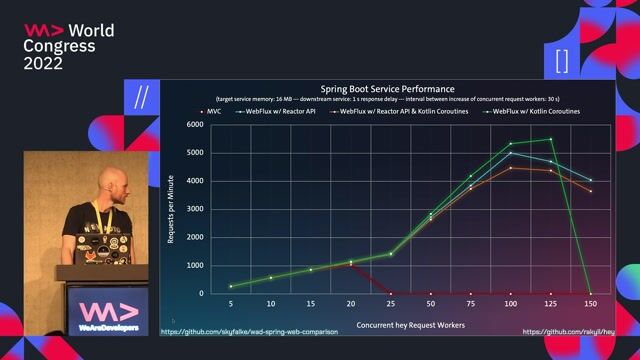
20:40 MIN
Identifying the limitations of the initial Cloud Foundry platform
Back(end) to the Future: Embracing the continuous Evolution of Infrastructure and Code

05:47 MIN
The challenge of migrating the Lidl online shop to the cloud
Let developers develop again
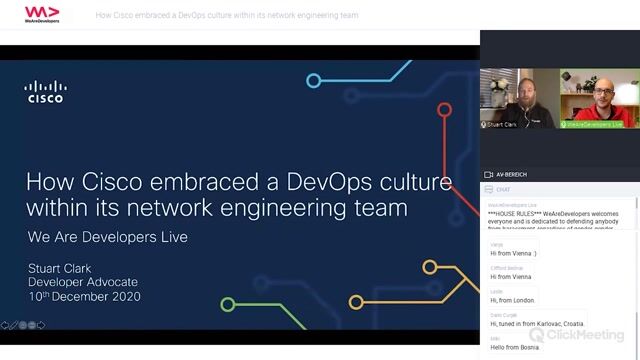
00:23 MIN
The challenge of scaling a traditional network engineering team
How Cisco embraced a DevOps culture within its network engineering team

08:25 MIN
Overcoming siloed code and deployment bottlenecks
The Road to MLOps: How Verivox Transitioned to AWS
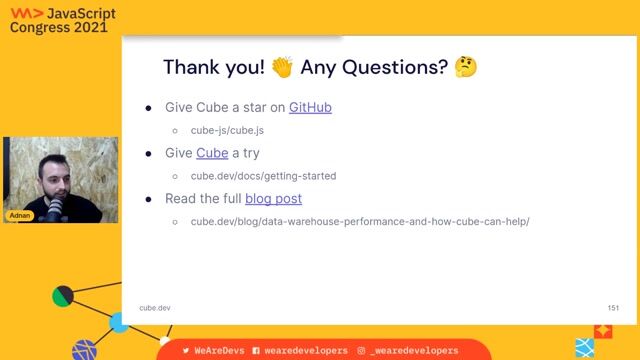
34:43 MIN
Answering questions on Cube's architecture and use cases
Making Data Warehouses fast. A developer's story.
Featured Partners
Related Videos
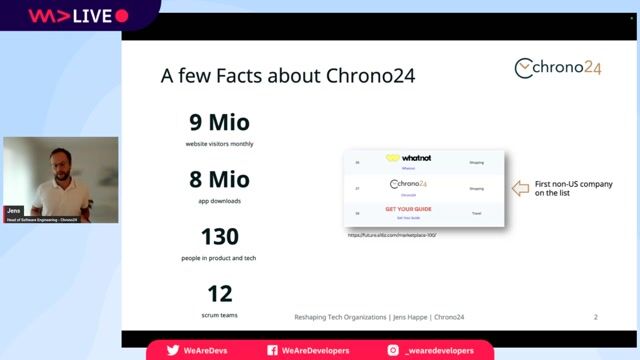 50:06
50:06Single Server, Global Reach: Running a Worldwide Marketplace on Bare Metal in a Cloud-Dominated World
Jens Happe
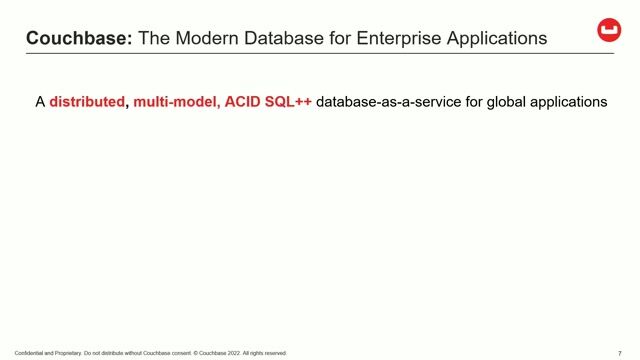 24:22
24:22Database Magic behind 40 Million operations/s
Jürgen Pilz
 21:09
21:09Scaling Databases
Tobias Petry
 22:32
22:32Swapping Low Latency Data Storage Under High Load
George Asafev
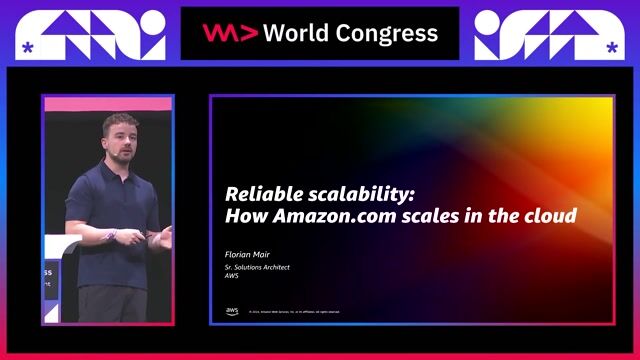 22:24
22:24Reliable scalability: How Amazon.com scales on AWS
Florian Mair
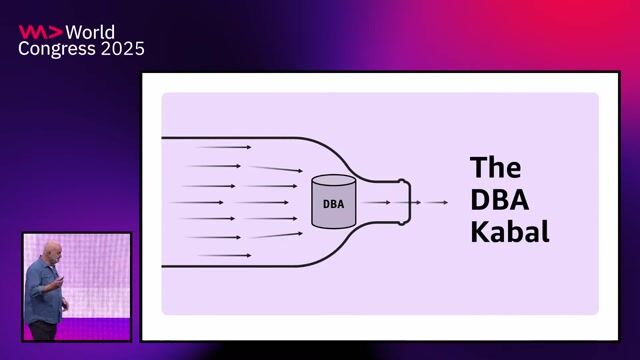 34:36
34:36Building Systems that Last
Werner Vogels
 37:08
37:08AWS Migration within 3 months
Steffen Heilmann
 44:37
44:37Advanced Caching Patterns used by 2000 microservices
Natan Silnitsky
From learning to earning
Jobs that call for the skills explored in this talk.


Backend Developer - Cloud Storage - STACKIT
Schwarz Dienstleistung KG
Go
REST
Terraform
PostgreSQL
Kubernetes
+2

Full Stack Engineer
Climax.eco
Rotterdam, Netherlands
€70-100K
Senior
TypeScript
PostgreSQL
Cloud (AWS/Google/Azure)
![Senior Software Engineer [TypeScript] (Prisma Postgres)](https://wearedevelopers.imgix.net/company/283ba9dbbab3649de02b9b49e6284fd9/cover/oKWz2s90Z218LE8pFthP.png?w=400&ar=3.55&fit=crop&crop=entropy&auto=compress,format)
Senior Software Engineer [TypeScript] (Prisma Postgres)
Prisma
Remote
Senior
Node.js
TypeScript
PostgreSQL

DevOps Engineer – Kubernetes & Cloud (m/w/d)
epostbox epb GmbH
Berlin, Germany
Intermediate
Senior
DevOps
Kubernetes
Cloud (AWS/Google/Azure)




Cloud DevOps Solution Engineer - Azure PostgreSQL | Zürich
Seiro
Azure
Scrum
DevOps
PostgreSQL
Agile Methodologies